Jeff Rulifson
description: an American computer scientist known for his pioneering work in computer networking and human-computer interaction.
7 results
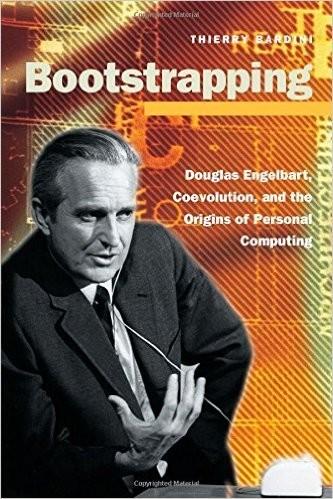
Bootstrapping: Douglas Engelbart, Coevolution, and the Origins of Personal Computing (Writing Science)
by
Thierry Bardini
Published 1 Dec 2000
Taylor, who gave me the opportunity to teach and do research in the best conditions pos- sible and, therefore, to tackle such a crazy project as writing this book; and, last but not least, Douglas Engelbart, of the Bootstrap Institute, who agreed to answer my questions and cheerfully helped me in writing this book. This book would not have existed without the patience and understanding of the people who told me their stories: Don Andrews, Bob Belleville, Peter Deutsch, Bill English, Charles Irby, Alan Kay, Butler Lampson, Harvey Leht- man, Ted Nelson, George Pake, Jeff Rulifson, Dave Smith, Robert Taylor, Keith Uncapher, Jacques Vallee, "Smokey" Wallace, and Jim Warren. Thank you all, and I sincerely hope that you will occasionally find your voice in these pages. My deepest thank-yous go to my development editor, Bud Bynack, who made a book out of my manuscript, and to my editor, Nathan MacBrien, who always knew how to keep his cool when I did not keep mine.
…
At a time when there was no such thing as an established community in computer science, but when this community first was structuring itself thanks to the then-emerging ARPA-IPTO efforts, the Bay Area, and especially the Stanford and Berkeley campuses, seemed the place to be for many young people aspir- ing to a career in computing on the West Coast. That atmosphere of innovation was what attracted some of the first stu- dents to join Engelbart's laboratory from the University of Washington, for ex- ample. Jeff Rulifson started in Engelbart's laboratory in January 1966, thanks to a connection to the laboratory via Chuck Kirkley, a close friend of Rulif- son's at the University of Washington. Kirkley had been working for Engelbart as a consultant in 1965, then had gone back to the University of Washington and convinced Rulifson and later Andrews to join the laboratory.
…
At that point (early 1966) the CDC 160A, a small, 12-bit minicomputer, and the CDC 3100, a 24-bit minicomputer, were operational in Engelbart's laboratory. Butler Lampson and Peter Deutsch, then students at UC Berkeley (where it was Deutsch's sophomore year), had come to the laboratory the sum- mer before as interns and had produced a lot of code. Jeff Rulifson's job was to bring up the first real display-based system on the CDC 3100, a batch sys- tem that was shared with other people at SRI. Everything was written from scratch, including the very first on-line editor. Don Andrews, another ex-undergraduate student from the University of Washington, also joined Engelbart's group in October 1966 while he was in his second year of graduate school at Stanford in the Computer Science Depart- ment.
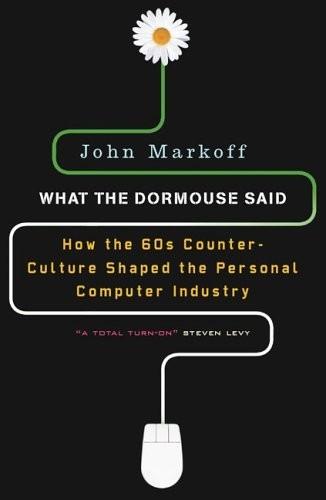
What the Dormouse Said: How the Sixties Counterculture Shaped the Personal Computer Industry
by
John Markoff
Published 1 Jan 2005
With backing from Licklider and then from his protégé Bob Taylor, who would eventually succeed Licklider at ARPA, the Augment Group grew steadily through the mid-sixties. A group of four young University of Washington students had all spent long hours together at the computer center there and had become friends, and they all came to graduate school at Stanford, where, one after another, they found their way to the Augment project. Jeff Rulifson, Elton Hey, Don Andrews, and Chuck Kirkley came to work during 1966 as the first NLS was being created. Kirkley did not stay long, having quarreled with Engelbart over whether it was possible to program a particularly difficult software function the researcher wanted built into the system. The young graduate student insisted, “You can’t do that!”
…
His strength was that he saw things from the point of view of the user and then challenged his programmers to figure out how to make his ideas work as part of the overall design. In 1966, a more powerful CDC 3100, a twenty-four-bit computer, replaced the CDC minicomputer, the 160A, that the project had begun with. Initially, the system was used in the noninteractive batch mode, but then Jeff Rulifson created a real-time graphics display for the new CDC, and a text editor was also written from scratch. In 1966, the Augmented Human Intellect Research Center also relocated to one of SRI’s new buildings. Visitors entered first into a large bullpen ringed with private offices, which were fairly spartan, with metal furniture.
…
Engelbart referred to the on-screen cursor as a “bug” or a “tracking spot,” and there were occasionally odd buzzing sounds in the background as he executed commands at the keyboard. The group had been experimenting with using the computer to generate different tones depending upon what was being executed, as a way of creating auditory feedback. After introducing the project and the system, Engelbart invited Jeff Rulifson on-screen from Menlo Park. Instantly, there he was on the giant display above Engelbart’s head, a serious young man with dark hair, a jacket and tie, and horn-rimmed glasses, holding forth on the internal structure of the Augment NLS. Next came Bill Paxton, another young Augment programmer, whose video image was shrunken into a window in the corner of the display while he discussed using the NLS for information retrieval with Engelbart.
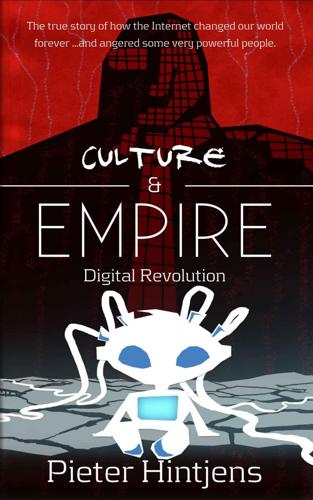
Culture & Empire: Digital Revolution
by
Pieter Hintjens
Published 11 Mar 2013
The document, simply called "RFC001", says: During the summer of 1968, representatives from the initial four sites met several times to discuss the HOST software and initial experiments on the network. There emerged from these meetings a working group of three, Steve Carr from Utah, Jeff Rulifson from SRI, and Steve Crocker of UCLA, who met during the fall and winter. The most recent meeting was in the last week of March in Utah. Also present was Bill Duvall of SRI who has recently started working with Jeff Rulifson. Crocker, Carr, and Rulifson are not household names. Steve Crocker and his team invented the Requests for Comments, or RFC series. These documents became the laws of the Internet, specifying every standard in a clear form that was freely usable by all.

Valley of Genius: The Uncensored History of Silicon Valley (As Told by the Hackers, Founders, and Freaks Who Made It Boom)
by
Adam Fisher
Published 9 Jul 2018
Doug Engelbart: We had to make our own computer display. You couldn’t buy them. I think it cost us $90,000 in 1963 money. We just had to build it from scratch. The display driver was a hunk of electronics three feet by four feet. Steve Jobs: Doug had invented the mouse and the bitmap display. Jeff Rulifson: An SDS 940 was used for the demo. Butler Lampson: The SDS 940 was a computer system that we developed in a research project at Berkeley, and then we coaxed SDS into actually making it into a product. Engelbart built the NLS on the 940. Bob Taylor: Doug and his group were able to take off-the-shelf computer hardware and transform what you could do with it through software.
…
The iPod, more than any other product, was responsible for transforming Apple from an also-ran into a colossus. Adam Rugel was the director of business development at Odeo, and though he was fired when the company pivoted into Twitter, he continued working at the Twitter offices, on his own project, for several years. Jeff Rulifson was the chief software architect of the NLS, Doug Engelbart’s revolutionary computer system. Steve Russell is the programmer most responsible for creating Spacewar, the first computer game worthy of the name. Spacewar was the game that inspired Nolan Bushnell to create Atari. Jim Sachs at Hovey-Kelley Design was responsible for making the mouse’s electronic innards cheap and reliable.
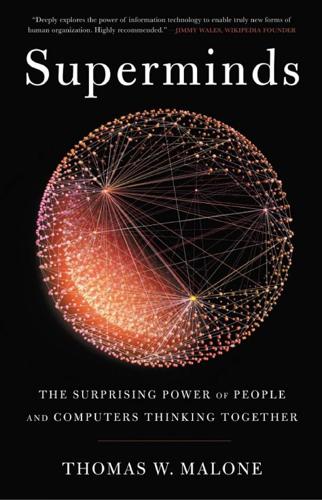
Superminds: The Surprising Power of People and Computers Thinking Together
by
Thomas W. Malone
Published 14 May 2018
Bridging the Specificity Frontier,” in Proceedings of the 2000 ACM Conference on Computer Supported Cooperative Work (New York: Association for Computing Machinery, 2000), 279–88. 10. An early example of the idea of cyber-human learning loops is Doug Engelbart’s concept of “bootstrapping” collective intelligence. See Douglas Engelbart and Jeff Rulifson, “Bootstrapping Our Collective Intelligence,” ACM Computing Surveys 31, issue 4es (December 1999), doi:10.1145/345966.346040. Unlike the concept of business process reengineering, which was popular in the 1990s, cyber-human learning loops assume that change is continuous rather than the result of occasional large redesign projects.
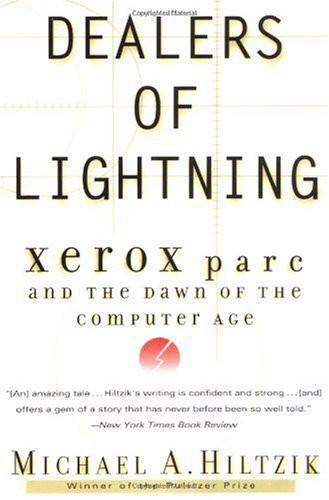
Dealers of Lightning
by
Michael A. Hiltzik
Published 27 Apr 2000
Kay, Roy Lahr, Butler W. Lampson, Charles Lee, David Liddle, Edward M. McCreight, Carver Mead, Diana Merry-Shapiro, Robert M. Metcalfe, James G. Mitchell, James H. Morris, and Timothy Mott. Also, Severo Ornstein, George E. Pake, Max Palevsky, Rod Perkins, Steve Purcell, Jef Raskin, Ron Rider, Jeff Rulifson, John F. Shoch, Richard Shoup, Charles Simonyi, Alvy Ray Smith, William J. Spencer, Robert Spinrad, Robert F. Sproull, M. Frank Squires, Gary K. Starkweather, Paul Strassmann, Bert Sutherland, Robert W. Taylor, Warren Teitelman, Lawrence G. Tesler, Charles P. Thacker, David Thornburg, Myron Tribus, John C.
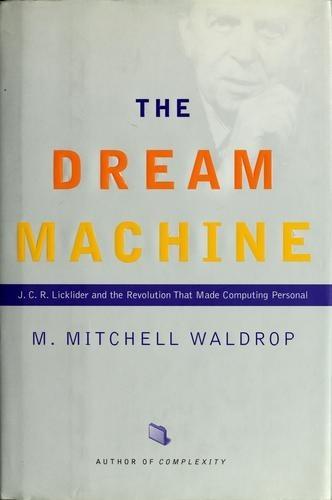
The Dream Machine: J.C.R. Licklider and the Revolution That Made Computing Personal
by
M. Mitchell Waldrop
Published 14 Apr 2001
His design was implemented by Steve Percell, a student intern from Stanford, and then integrated with a line-drawing system developed by PARC's John Shoch. Meanwhile, Bill Duvall of the paLOS team devised a "mini-NLS" that could be used for text processing on the terminals. Bob Shur built an animation system. Kay and paLOS's Jeff Rulifson began kicking around ideas for "iconic" programming languages, which would allow kids to write their programs in terms of graphical symbols instead of as text. And to keep the screen from get- ting too crowded, the team found a way to let documents appear in separate but overlapping "windows"-a brainstorm that had hit Kay one day while he was in the shower, his favorite place to think.